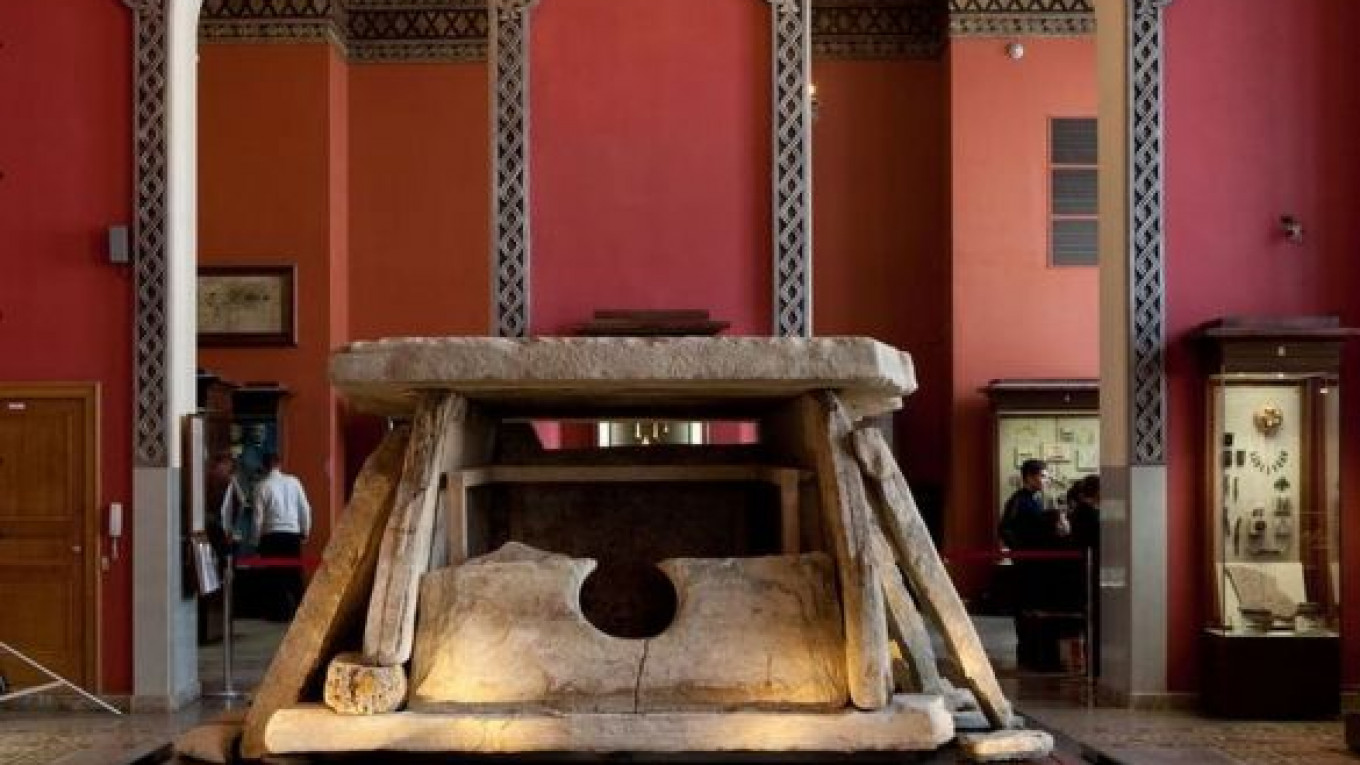A permanent exhibit on the Bronze Age is now on at the State Historical Museum, with a rare archaeological find — an ancient crypt, or dolmen, which once housed the remains of more than 70 people — as its centerpiece.
Thousands of dolmens have been found across the world, including more than 3,000 in the Russian Caucasus region alone, and archaeologists have long hypothesized that these structures were used as tombs. They were unable to prove their theory until the discovery of the Kolikho tomb that is now on show.
"It's not the largest dolmen, or the best-preserved, and certainly not the most beautiful," said Dr. Viktor Trifonov, a Bronze Age expert and the head of the restoration project. What makes this object unique, he said, is its status as "the first honestly acquired museum dolmen."
"These [monuments] were built to be part of the landscape," Trifonov said, "Ancient people would see them and understand — this is a tomb holding someone's remains, this is someone's territory. It's an entire language."
The dolmen was buried for almost 3,000 years before its discovery in 2008 at the bottom of the Kolikho River in the Krasnodar region.
Radioactive carbon dating shows that the dolmen was used as a tomb for almost 500 years, from 1800 B.C. to 1300 B.C. Ceramic pots, bronze arrowheads and a stone disk with astronomic symbols were found alongside the human remains.
Because dolmens stand in the open, they are vulnerable to the natural elements and to vandals and treasure hunters. When a dolmen is discovered out in the open, it is impossible to prove that nothing has been added or removed from its original contents.
Unique circumstances, a massive landslide that buried the structure at the bottom of a riverbed, preserved the Kolikho dolmen and ensured that its contents lay undisturbed until the present day.
"We showed that this really was the work of people that lived during the Bronze Age," said Dr. Natalia Shishlina, head of the department of archaeological monuments at the Historical Museum.
Apart from the dolmen, the exhibit puts on display some of the best objects from the Historical Museum's Bronze Age collection.
Bronze Age knives, chisels and headdresses, in various shades of pale green due to the effects of oxidization, are carefully preserved and labeled in signs in both English and Russian. Separately, there is a pile of hundreds of flint arrowheads that have been polished to show their original mother-of-pearl sheen.
The museum had been planning to display its Bronze Age collection for some time, Shishlina said, and the acquisition of the dolmen gave them the perfect reason to organize the current display.
The museum was involved in the recovery and preservation of the monument from the start. Weighing close to seven tons, it took a huge effort to extract the Kolikho dolmen from its resting place at the bottom of the river.
Dr. Trifonov's greatest hope is that the excitement around the dolmen will inspire the public to take a greater interest in preserving the thousands of other dolmens in Russia.
"I would say this was our main goal." he said. "I don't want this monument to turn into a memorial."
A Message from The Moscow Times:
Dear readers,
We are facing unprecedented challenges. Russia's Prosecutor General's Office has designated The Moscow Times as an "undesirable" organization, criminalizing our work and putting our staff at risk of prosecution. This follows our earlier unjust labeling as a "foreign agent."
These actions are direct attempts to silence independent journalism in Russia. The authorities claim our work "discredits the decisions of the Russian leadership." We see things differently: we strive to provide accurate, unbiased reporting on Russia.
We, the journalists of The Moscow Times, refuse to be silenced. But to continue our work, we need your help.
Your support, no matter how small, makes a world of difference. If you can, please support us monthly starting from just $2. It's quick to set up, and every contribution makes a significant impact.
By supporting The Moscow Times, you're defending open, independent journalism in the face of repression. Thank you for standing with us.
Remind me later.






